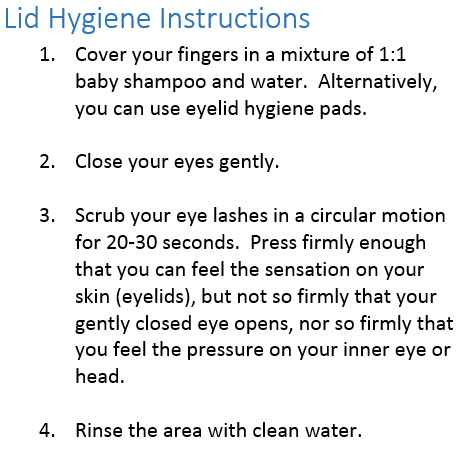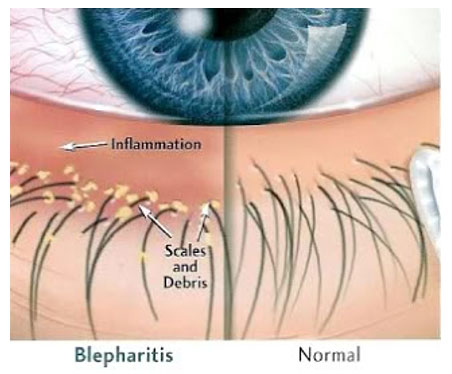Marginal Blepharitis
 Blepharitis is an infection of the eyelids. The bacteria seen in marginal blepharitis is the same bacteria that is found throughout your natural skin flora, Staphylococcus A & E. This bacteria is normally kept in check on your skin and eyelids, but inadequate immunity or hygiene can cause an overgrowth of this otherwise natural bacteria. This type of blepharitis is also known as anterior blepharitis. It should not be confused with posterior blepharitis, which is also known as meibomian gland dysfunction.
Blepharitis is an infection of the eyelids. The bacteria seen in marginal blepharitis is the same bacteria that is found throughout your natural skin flora, Staphylococcus A & E. This bacteria is normally kept in check on your skin and eyelids, but inadequate immunity or hygiene can cause an overgrowth of this otherwise natural bacteria. This type of blepharitis is also known as anterior blepharitis. It should not be confused with posterior blepharitis, which is also known as meibomian gland dysfunction.
Symptoms: Dryness, Itching
The bacteria on your eyelids expel toxic waste onto your lids, which will fall into your eye when you blink or rub your eyes. These toxins that have entered your eye tend to cause dryness and itching. Just because your eyes are dry or itchy doesn't mean there is an active infection on your cornea or conjunctiva (your eye).
Risks
Mild eyelid infections rarely spread to the cornea or conjunctiva (the eye itself). Moderate or severe infections may spread. Your optometrist will choose an appropriate follow-up visit if you have a moderate or severe infection, and you should make sure to follow these instructions carefully because infections of the cornea can lead to permanent vision loss.
Treatment
 Your eye doctor will tell you the severity and treatment plan for your condition. In some cases, basic hygiene will take care of the problem. Adding lid hygiene to your morning and nightly routine in or outside of the shower can make a huge improvement. Depending on the severity, it may be recommended 1-3 times a day. Do not assume your case is mild without consulting an eyecare professional.
Your eye doctor will tell you the severity and treatment plan for your condition. In some cases, basic hygiene will take care of the problem. Adding lid hygiene to your morning and nightly routine in or outside of the shower can make a huge improvement. Depending on the severity, it may be recommended 1-3 times a day. Do not assume your case is mild without consulting an eyecare professional.
If lid hygiene is not effective or the infection is very significant, eye drops or eye ointment will be prescribed to you by your optometrist.
For the most stubborn or severe infections, oral antibiotics may be prescribed. These behind-the-counter medications should be taken under the care of your optometrist. Especially with oral antibiotics, side effects and drug-to-drug interactions can make them dangerous to use, so give your optometrist a full list of your current medications and follow their instructions on its use.
